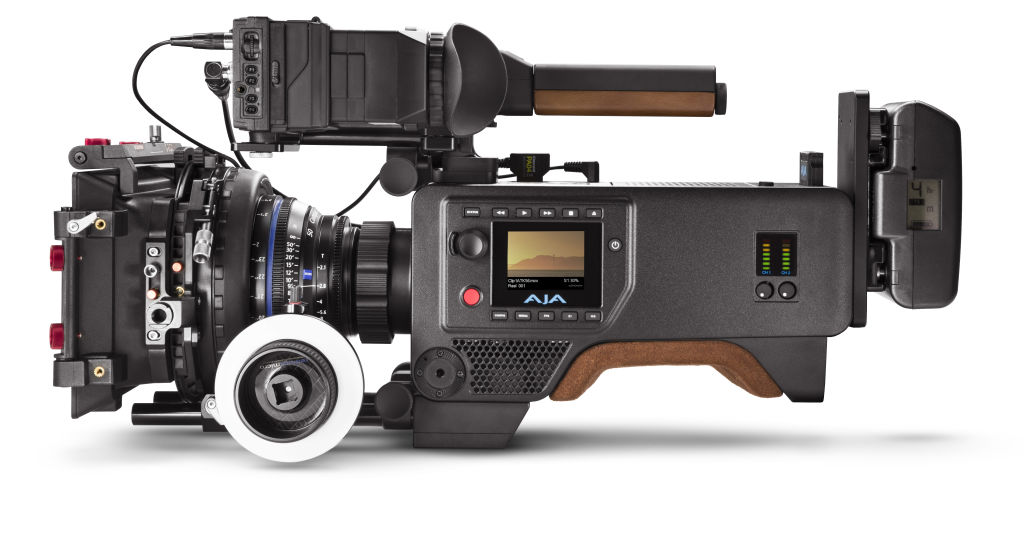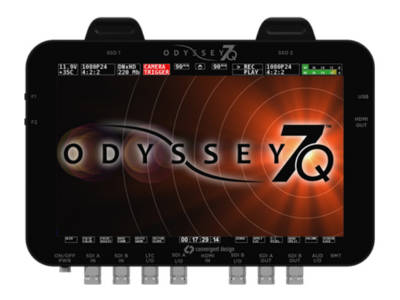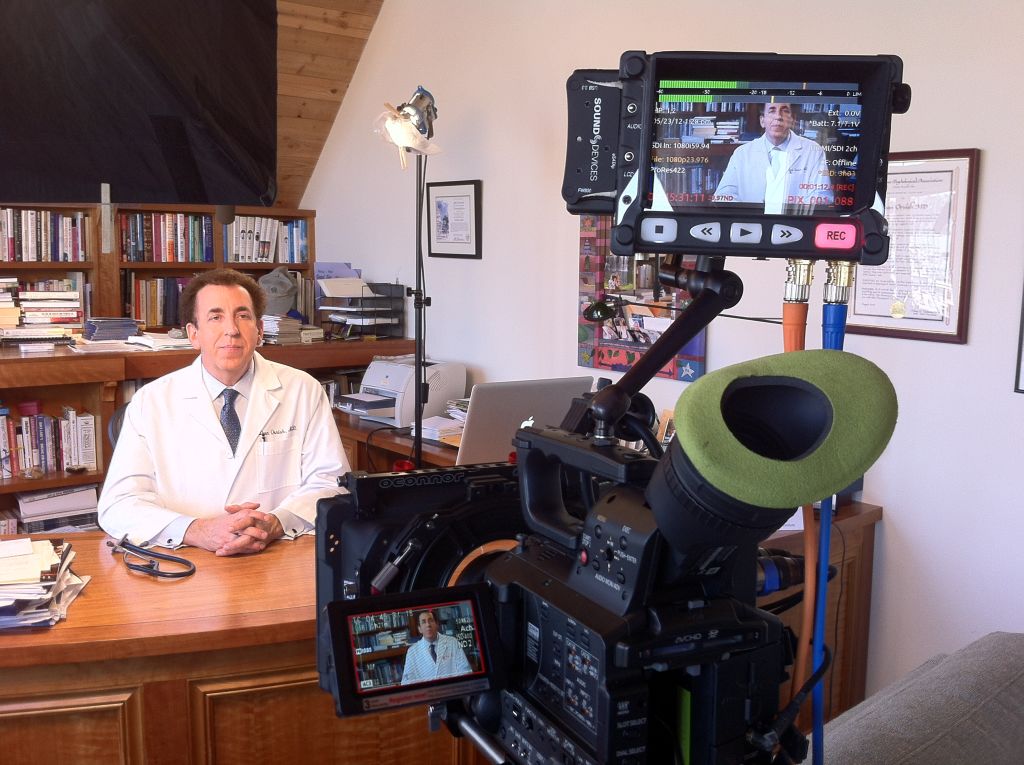< Back to all posts
One Recording Format: Or The Unexpected Resilience of Pro Res
AJA Cion, Sony F55, F5, FS-7, all Black Magic cameras, the new RED Weapon 8k, Phantom Flex 4k, all ARRI Alexa cameras, and even the Panasonic Varicam 35. What do these cameras have in common? How about external recording devices? Sound Devices Pix 240, 260, E5, E7, E5H, Convergent Design Odyssey 7Q, Atomos Shogun, Samurai Blade, Ninja Blade, Ninja 2, Ninja Star, Ronin recorders, AJA Ki Pro recorders.
The answer is Pro Res.

Has Pro Res made a comeback? Quite frankly, it never went away. If you have been a shooter or DP for some years you will remember the days of Standard Definition and going to NAB when the one format was Betacam. NAB and other showcases were places that allowed camera manufactures to show what their cameras could do…but all the cameras did Betacam. As a DP, I was looking for what the camera could do or the special look it gave a project. While other formats such as DVcam and DVCpro existed, the king was Betacam.

Fast forward to the beginnings of HD: this is when the camera manufacturers began to see that placing footage (and all the information that came with it) on their own recording media and codec was a good thing.
The downside is that the information needed to be compressed. The amount of compression varies from codec to codec, and Pro Res had the least amount of compression. We have gotten to a point where there are now over 40 different codecs – not to mention every camera maker uses their own media to record that codec. There really isn’t a problem with doing this, and it’s not unique to our industry. Car companies do this all the time. For example, you often hear them tout “our 4 cylinder engine is better than this one!” – so, now you have several car companies all making a four cylinder motor, and when you decide to buy a 4 cylinder you buy your one and that’s it.
But if you are like me, you have multiple camera packages, and when you purchase a camera you then need to buy the proper media to work with that specific camera. And, chances are you may need to purchase a new media reader too. Let me reiterate: there is no problem doing this! Cameras have different looks and functions that help create the right project for the client. But honestly I can’t ever remember a client asking for a certain camera for its codec, so I have been moving my clients ever so slowly towards Pro Res. The way to do this is by attaching an external recorder to the camera we are using on that project. In the end, the client walks away with the original format from the camera and a copy in Pro Res.
There is a very good reason for doing so.
This is where things get technical.. Full disclosure, I am not a video engineer or even technical. I shoot and I provide content. For our purposes here I will create simple examples to explain Pro Res.
When you record to Pro Res several very cool things take place. First off, Pro Res records 10 bit. The significance? The higher the bit rate, the more colors and texture are recorded. In fact 10 bit has four times more color and texture then 8 bit. When you record on Pro Res you are recording almost all of what your camera sensor is seeing. Imagine, if you will, a Super 35mm sensor recording in 4k and not losing the quality of the image. Your format in the camera is most likely compressing that image to save space in its own codec. The term for this is “lossless” and it is used when talking about Pro Res. A compressed video can degrade when it is processed or re-compressed over and over. Lossless and Pro Res go hand in hand.
Next, let’s talk about color sampling. Pro Res is the best at storing more color information than other codecs. What you are looking for in color sampling is the ability to see sharp distinct shapes and edges within that color. This becomes critical when you are dealing with chroma key and color correction.
It’s important to understand that I don’t advocate using Pro Res to finish your project. I’m advocating recording the original footage on it and edit with it. Then convert to a finishing format of your choice. Pro Res certainly takes up a lot of storage space …but so does shooting in RAW. If you have the time and space it’s better to shoot in RAW; however, oftentimes there isn’t enough time. There are deadlines and time constraints everywhere.
I hear so much misinformation about the ability to use Pro Res in certain types of non-linear edit software. The most common is it will only work with Final Cut Pro on a MAC. This is so wrong! Pro Res works with both MAC and PCs. All you need for a PC is the latest Quicktime software and the Pro Res codec. Pro Res will work with AVID, DaVincini Resolve, Premier Pro, and others.
The photo below showcases one of my cameras in action. This is a Panasonic AF-100 with a Zeiss lens. If I shot this interview with just this camera, that lens and its native codec it would look good on its own, but the codec is AVCHD, which is a highly compressed and low bitrate format. Remember: a low bitrate means less quality…but we shot this interview in Pro Res HQ 10bit.

I’ll walk you through it.
Take a look at that Sound Devices Pix 240 external recorder above the camera. The orange video cable is connected from the HD/SDI out of the camera and going to the video in of the Pix. The blue video cable is going to the client monitor. That Pix recorder is taking that signal and up-resing it.
The result? The client received an intermediate codec with higher color sampling and four times more colors, from a micro 4/3’s sensor and a Zeiss lens.
Why are many in the industry going back to Pro Res? It streamlines the capturing and editing process without too much compression. It provides shooters and DPs with that one thing they’ve always wanted, which is that world of one format or codec. When Panasonic was creating the Varicam 35 they surveyed 200 of the top cinematographers, and one of the questions they asked was, what the one format they liked to use and whether or not should it be in the new Varicam 35. Guess what the answer was? I’ll give you a hint: Panasonic will be installing Pro Res later this year into the Varicam 35 via a firmware update. Ask, and you shall receive.
Pro Res isn’t dead. It never was. It works well in many different film locations and will continue to do so.
Are you using Pro Res? If not, what are you using and why? Tell us in the comments below – and don’t forget to connect with us on Facebook, Twitter, LinkedIn.







Hi Kevin,
Thought I'd see you at NAB this year.
Well put. Given the choice of codec we prefer to either shoot RAW, Esp with our new EPIC DRAGON 6K, if there is time and budget for extensive grading.
We shoot Prores. when the budget is smaller and/or the time to delivery is shorter.
Another nice thing in a lower budget environment is that the aftermarket recorders:
(Pix, Oddysey, ninja etc) also function as a really good on camera monitor that lets you share the image directly with the director/field producer.
All The Best,
TJ Williams sr
Dp Seattle WA
206 769 8585
Nice article, but I think it's important to point out that the Pix 240 is not "taking that signal and up-resing it." It is taking a signal from the sensor before it is compressed in the camera and recording that as Pro Res. The resolution is not changing.
I currently use the Atomos samurai blade with APRHQ and the HDX900 with SSDs only.
Transfer to a hdd drive and same day edit or ship overnight.
The Gh4 shoots 4k .mov files at 100 Mbps on SD cards(u3)- excellent for two angles(crops) in one 1080p edit.
Or shoot 1080/60p(200Mbps)for conformed slomo1080/24p timeline – also has 96fps but in a lower bitrate.
I use the YAGH(xlr/sdi/hdmi) with an ext battery pack- it gives reliable connections and works great on my HH camera rig.
Lumix 12-35 f2.8, 35-100 f2.8 are good choices for lenses – both with touch screen AF and IS. IPAD app is good.
GoPro Hero cameras are excellent POV/Alt angle shots(even when running them over).
Also use a small 4ft slider and a longer 12ft metal pipe dolly.
All of this is now included in my Fieldcrew.com 2 person camera package(10hrs).
Like the new cameras coming out – maybe C300 MarkII w/ Canon lenses or Ursa Mini 4.6k.
Or whatever camera brings the best usable specs – maybe Panasonic's new 4k 60p AG DVX200
with 5 axis stabilizatipn and 4k 60p. Currently on the horizon are a new hh gimbal(DJI Ronin M) and
a mft Olympus Pro 7-14mm f2.8.
4k 24p on a 1080/60p timeline rocks. Edit with 27" IMAC with SSDs using FCPX in 4k and 1080p.
Online video is pushing the quality bar – 4k online videos before broadcast or cable – Amazing!
Let me say that again – Online web video is putting out a higher 4k signal vs the others(time date 2015).
"But this video is just for the web!" say some clients – Okay but with a hit counter and instant feedback via comments and
third party social media sites ready to go viral. Also, let us not forget like and dislike buttons. So I believe in getting the best footage possible
for it is important as ever to put your best foot forward.
Please remember to use the desktop browser setting option on your mobile device to be able to select the higher resolutions.
All of this is still in continuous flux so look out for full frame 50MP Canons for video(5dr/s 4k upgrade?)
2013 41MP Nokia smart phone, 2014 4k GoPro Hero 4 and 8k F65 Sony, Red(Scarlet, Epic, Dragon), Arri(Alexas,Amira), New Varicam S35
– all are good tools – even the Iphone 5s movie with a Moondog anamorphic lens adapter showed at Sundance – "Tangerine".
"I like getting the shots and creating compelling stories – Life is short and it is awesome to be able to put them in stone(aka THE Internet)
Future generations will hopefully be able to discover and further these good time traveling spirits,"
-Mike Desjarlais, Documentarian, Fieldcrew.com, Inc.
"No matter what the format"© Fieldcrew.com, Inc. Mike Desjarlais 313 791 0680
It looks like I'll have to dump my Shogun on the market because it cannot accept 4K via HDMI, nor 2K via SDI, so none of the 17:9 widescreen formats are possible, and if you bought a 4K camera like the Sony PXW-FS7 to shoot 4K video, you are out of luck with the Shogun. Not to mention, it's noisy fan keeps putting a 73Hz hum into all of my recordings.
The PIX series recorders look promising. When they enable trigger via timecode and can accept more than two channels of audio via HDMI stream, I'll snap one up pronto and dump this Shogun on the market. I use the Shogun lately as little more than an expensive monitor, since it's UHD recording is pretty useless to me.